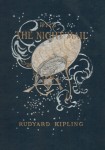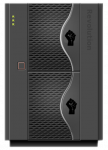Many of you have probably heard the name of Alan Turing, but most of those probably don’t appreciate the extent of his contributions. To say that he invented the modern world is an overstatement, but he did dream up the computers we see around us today, and helped win World War II in the process. But the story of Alan Turing is as much about exclusion and defeat as it is of genius.
Sunday series
From Kipling’s Dirigibles to the Jet Age
I don’t get much chance to read for pleasure, but two things I’ve been reading recently spurred my imagination. After reliving the advent of modern transportation in the solid non-fiction Jet Age by Sam Howe Verhovek, I stumbled upon two pieces of speculative fiction from an unlikely source that predated everything presented there.
We Need a Storage Revolution
Storage protocols continue to mimic direct attached storage, with the concepts of block and file at its core. No amount of virtualization, and no new protocol, will fix this – we need a storage revolution.
Where Will Virtualization of Data Center Infrastructure Take Us?
Virtualization of IT systems decouples physical infrastructure from logical resources, hiding complexity and enabling new capabilities. However, not all potential benefits of virtualization have meaningful value outside IT circles: Too many of our discussions revolve around the very complexity that virtualization technology should be hiding! True business value is derived from transformed virtual resources in the next-generation data center, not the incremental capacity gains of virtual servers. But how will we get there, and what will this future look like?
Granularity: The Hidden Challenge of Storage Management
Many storage challenges focus on the conflict between data management, which demands an ever-smaller unit of management, and storage management, which benefits most from consolidation. Developing data management capability that is both granular enough for applications and scalable enough for storage is one key to the future of storage.




